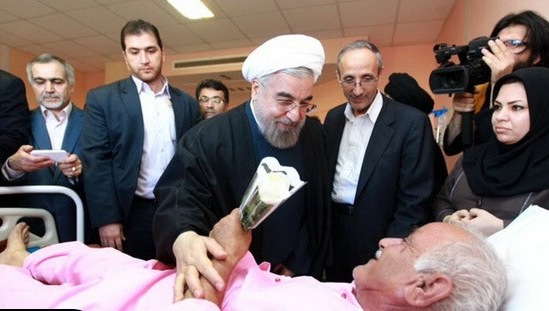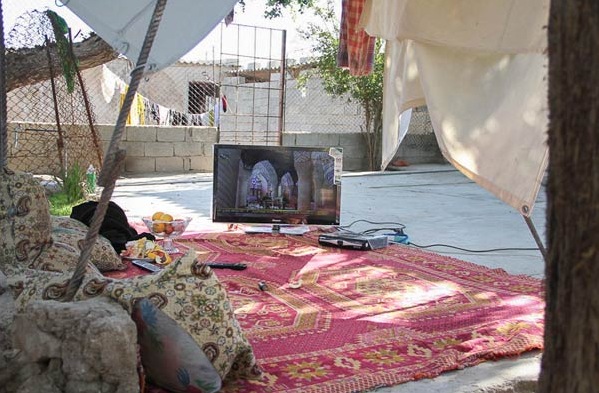December 06-2013

The quake near Borazjan killed eight people, four of them children, and left dozens injured. One report said it collapsed 250 homes in 10 townships. But, fortunately, it struck at 3:21 p.m., when most villagers were outside their mud-brick homes and thus not caught under heavy falling walls. It shook the area for about 20 seconds.

The quake was rated at 5.7, a magnitude that is devastating to mud-brick buildings but rarely does more than break glass and crockery in modern structures. Thus it was no threat to the Bushehr nuclear plant.
The plant told the IAEA there was no damage and the IAEA said it was satisfied with the report and planned no special inspection. A spokesman for Rosatom, the Russian firm that built the plant and oversees the Iranian operators today, said the plant was operating at 100 percent of capacity when the quake hit and continued to generate power without interruption.
This was, however, the second quake in the region of the plant this year. The first one, rated at 6.1 or roughly a third again as powerful as last week’s quake, stuck April 9 and killed 37 people. The April quake was 80 kilometers southeast of the nuclear plant. The latest quake was 60 kilometers northeast.
The latest quake was in a mountainous area, which means there are fewer residents but also can cause landslides, which in some cases have done more damage than a quake itself.

The second quake in one year near Bushehr prompted some muttering across the Persian Gulf where Arabs have long questioned the siting of the nuclear plant and fear radioactivity leaks after quakes. The comments across the Persian Gulf have grown as a result of the 9.0 quake in Fukushima, Japan, that damaged nuclear power plants that haven’t yet been sealed. But the power of that quake was not on a scale seen in Iran.
Each increase of one in magnitude represents a release of energy 10 times greater. Thus, the 9.0 Fukushima quake was 1,000 times more powerful than a 6.0 quake.
Since the massive 2003 Bam quake, Iran has been relatively quiet seismically. It has suffered only 15 quakes with fatalities in those 10 years.
There were no fatalities reported from earthquakes in Iran in 2007, 2009 and 2011.
The last super-quake in Iran, in terms of the death toll, was the one that leveled Bam December 27, 2003. The death toll there was put at 27,000. It was recorded at magnitude 6.6.
Here are the 15 quakes with fatalities since the Bam earthquake:
Locale Scale Date Dead
Chalus 5.5 05/28/04 35
Zarand 6.4 02/22/05 612
Qeshm 5.9 11/27/05 10
Lorestan 6.0 03/30/06 70
Qeshm 6.1 09/10/08 7
Lamerd 5.8 07/21/10 1
Damghan 5.9 08/27/10 3
Fars 6.1 09/26/10 1
Fahraj 6.5 12/20/10 11
E. Azer. 6.3 08/11/12 306
S.Khorasan 5.6 12/05/12 6
Bushehr 6.1 04/09/13 39
Baluchestan 7.8 05/16/13 1
Hormuzgan 6.2 05/11/13 1
Borazjan 5.7 11/28/13 8
That is a death toll of 1,066 in the decade since Bam, which will mark its 10th anniversary in three weeks.
The most notable quake since Bam is the immense 7.8 super-quake that struck Baluchestan last May. That tied the record for the mightiest earthquake in Iran since seismographs have been measuring quakes. But it struck in a very remote corner of Baluchestan and was abnormally deep below the surface of the earth, which absorbed much of the quake’s destructive power. As a result, only a solitary death was recorded.
The deadliest earthquake to strike Iran in modern times killed an estimated 37,000 people June 21, 1990, brutalizing Gilan and Zanjan provinces, both densely populated. There may have been some worse quakes in earlier eras, but death toll figures are very unreliable. A 1780 quake in Tabriz is thought to have killed from 50,000 to 200,000 persons. The published tolls from the 1990 quake and the 2003 Bam quake are themselves subject to question.
In 2000, the Interior Ministry said a study showed that 86 percent of Iran’s people live atop faults. Shiraz is the only major city in the country that can be described as quake-free.
